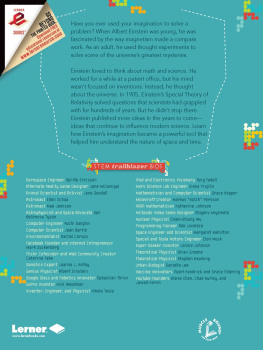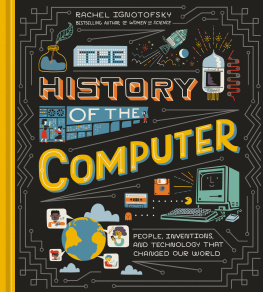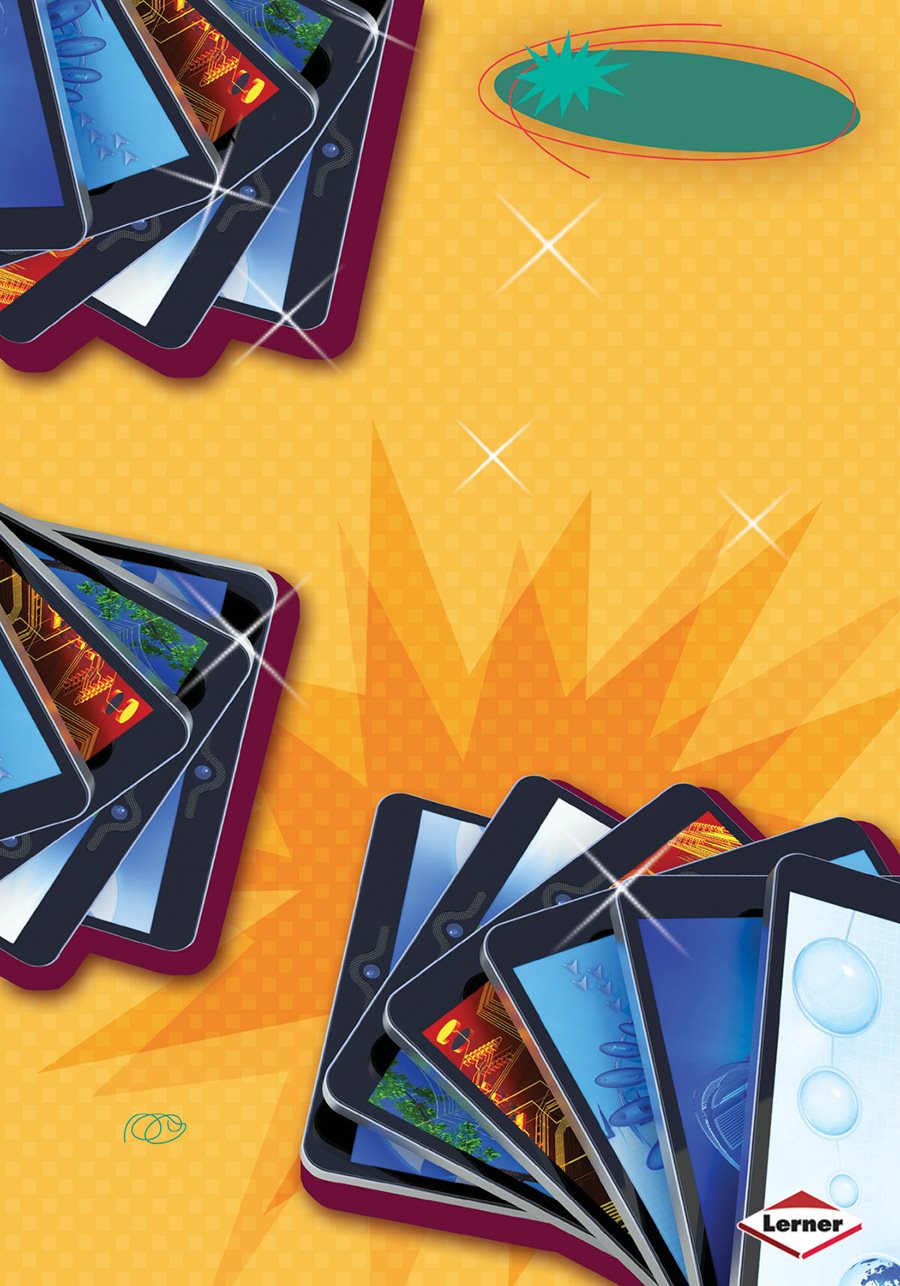AWeSoMEINveNTioNSYouuseEVERYDAY
TReMeNDoUS
T eCHNoLoGY
INVeNTioNS
KATIE
MARSICO
Copyright 2014 by Lerner Publishing Group, Inc.
All rights reserved. International copyright
secured. No part of this book may be reproduced,
stored in a retrieval system, or transmitted in any
form or by any meanselectronic, mechanical,
photocopying, recording, or otherwisewithout
the prior written permission of Lerner Publishing
Group, Inc., except for the inclusion of brief
quotations in an acknowledged review.
Lerner Publications Company
A division of Lerner Publishing Group, Inc.
241 First Avenue North
Minneapolis, MN 55401 U.S.A.
Website address: www.lernerbooks.com
Library of Congress Cataloging-in-Publication Data
Marsico, Katie, 1980
Tremendous technology inventions /
by Katie Marsico.
p. cm. (Awesome inventions you use
every day)
Includes index.
ISBN 9781467710923 (lib. bdg. : alk. paper)
ISBN 9781467716901 (eBook)
1. InventionsJuvenile literature. 2. Technological
innovationsJuvenile literature. I. Title.
T48.M386 2014
600dc23 2012046008
Manufactured in the United States of America
1 PP 7/15/13
CONTENTS
INTRODUCTION
GOTTA <3
TECHNOLOGY!
Screens you gotta love em! Face it. You touch them. You watch them. They make it easy and fun to find your way around the digital world we live in. Inventors have come up with a lot of cool screen technology. Yet it is more than just cool. Have you ever thought about life without these inventions?
Oh, the horror of not texting your friends! And how would you feel about copying two hundred flyers for the school bake sale by hand? Sore and cranky to say the least!
Thats only the tip of the iceberg. Swoosh your fingers across your smartphone and you can order pizza and listen to your favorite pop star. Yes, with screen technology, you can pretty much rule the world. So get set to learn about ten amazing inventions and why you are lucky to have them. You can start reading as soon as that song ends.
Screen
technology lets
us play video
games.
Want to look at photos?
Or text a friend?
Smartphone screens are
small, but you can do
all kinds of fun things
with them.
COPY MACHINES
Time for a history quiz! Which of these statements is true? a) Thomas Jefferson wrote the Declaration of Independence. b) He was the third president of the United States. c) He used a copier. d) All of the above. Pencils down! Did you choose all of the above? Thats the right answer!
Jefferson did not own a Xerox machine. He worked with a copying press. In 1780 inventor James Watt developed this early mechanical copier. (Watt also designed the steam engine.)
To use the press, a person would place a damp sheet of paper against a document. A heavy block pressed both sheets of paper together. The ink from the document transferred
to the damp paper. The words showed up backward. So you had to read the copy by flipping over the paper and looking through its back side.
Sound like a lot of work? It was! A lawyer in New York named Chester Carlson wanted an easier way to make copies. In the late 1930s, he began working on a process called xerography. Carlsons method did not require liquids. Instead, his machine used static electricity, light, and a powder called toner to make dry copies. The copier electrically charged words on a piece of paper. Then it shined light on the words. Toner formed the print on the paper. In 1959 the company that later became Xerox started selling Carlsons machine.
Zip ahead more than fifty years. Your
moms clinic, your dads office, and your school
all have copiers and laser printers. These
machines are complex. Yet they make our lives
a lot simpler. Want proof? One study showed
that people pump out 3.1 trillion copies and
laser- printed pages every year!
Does this copier look like a
modern copy machine? Nope.
Its a portable copier that
President Thomas Jefferson
made in the early 1800s.
Heat and electrical charges thats
what this Xerox copier (RIGHT) from
the 1960s needed to do its job.
TELEVISIONS
Its Saturday morning. You want to watch your favorite cartoon shows. You search your house from top to bottom. Theres no television in sight. This has to be a bad dream! How will you live without TV?
Calm down. That was just to show you what life would be like if no one had invented TV. But fortunately for you, someone did!
Early inventors were not worried about making cartoon
fans happy. Men like Alexander Graham Bell wanted to find a
way to link sounds with sights. Bell is best known for inventing
the telephone in 1876. He also hoped to find a way to let
callers see the person on the other end of the line.
Bell was not the only person interested in connecting sound and vision. Popular trading cards from the 1890s show a machine that would allow audiences of the future to watch and listen to live concerts from home.
So who took the next step to create television? One of these people was Philo Taylor Farnsworth. He was in high school in Idaho when he first thought about such an invention.
Farnsworth knew the first step was to capture a moving image with a camera. Next, he needed to code this image
into radio waves. Then he had to change the image back into a picture that could be shown on a screen.
Where did the picture
show up in this 1930s TV?
In the small round opening
in the top box. And thats
Philo T. Farnsworth turning
the knobs!
IN 1950 ZENITH CAME OUT WITH AN
INVENTION KNOWN AS LAZY BONES.
It was connected to a television set by a
long cord. When viewers clicked on their
Lazy Bones, magic! TV channels quickly
changed. You might have something like
Lazy Bones in your own home. Its called
a remote control!
Farnsworth found a way to carry out these steps. He used
a beam of electrons to scan images onto a screen. In 1927 he created a special camera tube. He worked with it to broadcast a simple image of lines onto a screen in his lab. Farnsworth went on to capture an image of a dollar sign and another of his wifes face.

























